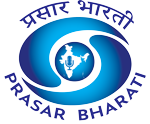After a milestone voter participation across both phases of the Bihar Assembly elections, all eyes are now on Friday’s counting day. The Election Commission of India (ECI) has termed this election a remarkable chapter in the state’s democratic journey, with Bihar recording the highest voter turnout since its first election in 1951.
According to the ECI, the overall turnout stood at 66.91 per cent, surpassing all previous records. Women voters once again led the way, with a participation rate of 71.6 per cent, compared to 62.8 per cent among men. This marks the highest-ever female voter turnout in Bihar’s electoral history.
Polling was held across 38 districts and 243 Assembly constituencies, covering a total electorate of 7.43 crore. Of these, over 3.93 crore were men, 3.51 crore women, and 1,725 belonged to the third gender category. The state also had 7.2 lakh voters with disabilities, 14 lakh young electors aged 18–19, and over four lakh senior citizens above 85 years.
The term of the current Bihar Assembly runs from November 23, 2020, to November 22, 2025.
The first phase of polling, conducted across 121 constituencies in 18 districts, concluded peacefully with a record 65.08 per cent turnout. The ECI ensured complete transparency by introducing 100 per cent live webcasting from all 45,341 polling stations, a first for the state. Chief Election Commissioner Gyanesh Kumar, along with Election Commissioners Dr. Sukhbir Singh Sandhu and Dr. Vivek Joshi, monitored polling operations in real time and interacted with field officers to ensure smooth conduct.
A total of 1,314 candidates contested in the first phase, including 1,192 men and 122 women. More than 4 lakh polling personnel were deployed, and mock polls were completed before 7 a.m. on polling day in the presence of 67,900 polling agents representing the candidates.
In a notable development, 16 international delegates from six countries — South Africa, Indonesia, Thailand, the Philippines, Belgium, and Colombia — visited Bihar under the International Election Visitors’ Programme (IEVP). They lauded the Election Commission for conducting one of the world’s most transparent and participatory elections.
The second phase of polling was held across 122 constituencies in 20 districts, covering an electorate of 3.70 crore voters, including 1.95 crore men, 1.74 crore women, and 943 third-gender voters. This phase witnessed an even higher turnout of 68.76 per cent, with 74.03 per cent of women casting their votes compared to 64.1 per cent of men.
This round was crucial, as it decided the fate of 12 ministers from Chief Minister Nitish Kumar’s Cabinet, including JD(U) leaders Vijendra Yadav, Lesi Singh, and Sheela Mandal, as well as BJP ministers Prem Kumar, Renu Devi, and Vijay Kumar Mandal.
In the 2020 Assembly elections, out of these 122 seats, the BJP had won 42, the RJD 33, the JD(U) 20, the Congress 11, and the Left parties five. The ruling NDA, comprising the BJP, JD(U), HAM(S), LJP (RV), and allies, is seeking a second consecutive term in power, while the Mahagathbandhan — led by the RJD, Congress, and Left parties — is hoping for a comeback. The Jan Suraaj Party has also fielded candidates across several constituencies.
The elections were conducted through 90,740 polling stations, a significant increase from the 77,462 booths set up during the 2024 Lok Sabha elections. Over 8.5 lakh polling personnel were deployed, supported by 1.4 lakh polling agents and a team of 243 General Observers, 38 Police Observers, and 67 Expenditure Observers.
Despite the scale of the exercise, the polling process remained peaceful, with no reports of re-polls from any constituency.
Alongside Bihar, bye-elections were held in eight Assembly constituencies across six states and one Union Territory, including Budgam and Nagrota in Jammu and Kashmir, Anta in Rajasthan, Ghatsila in Jharkhand, Jubilee Hills in Telangana, Tarn Taran in Punjab, Dampa in Mizoram, and Nuapada in Odisha.
As counting begins tomorrow, Bihar stands at a defining moment — a reflection of both its deepening democracy and the rising participation of its citizens, particularly women, in shaping the state’s political future.














